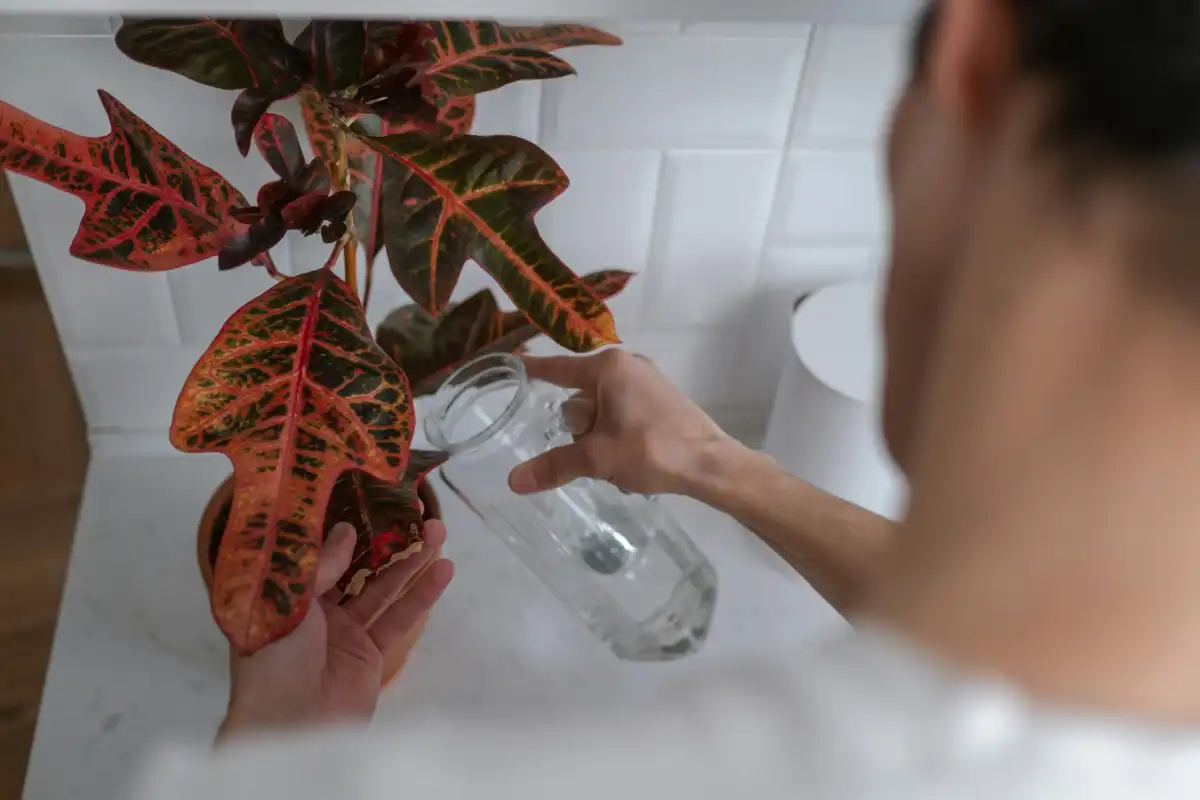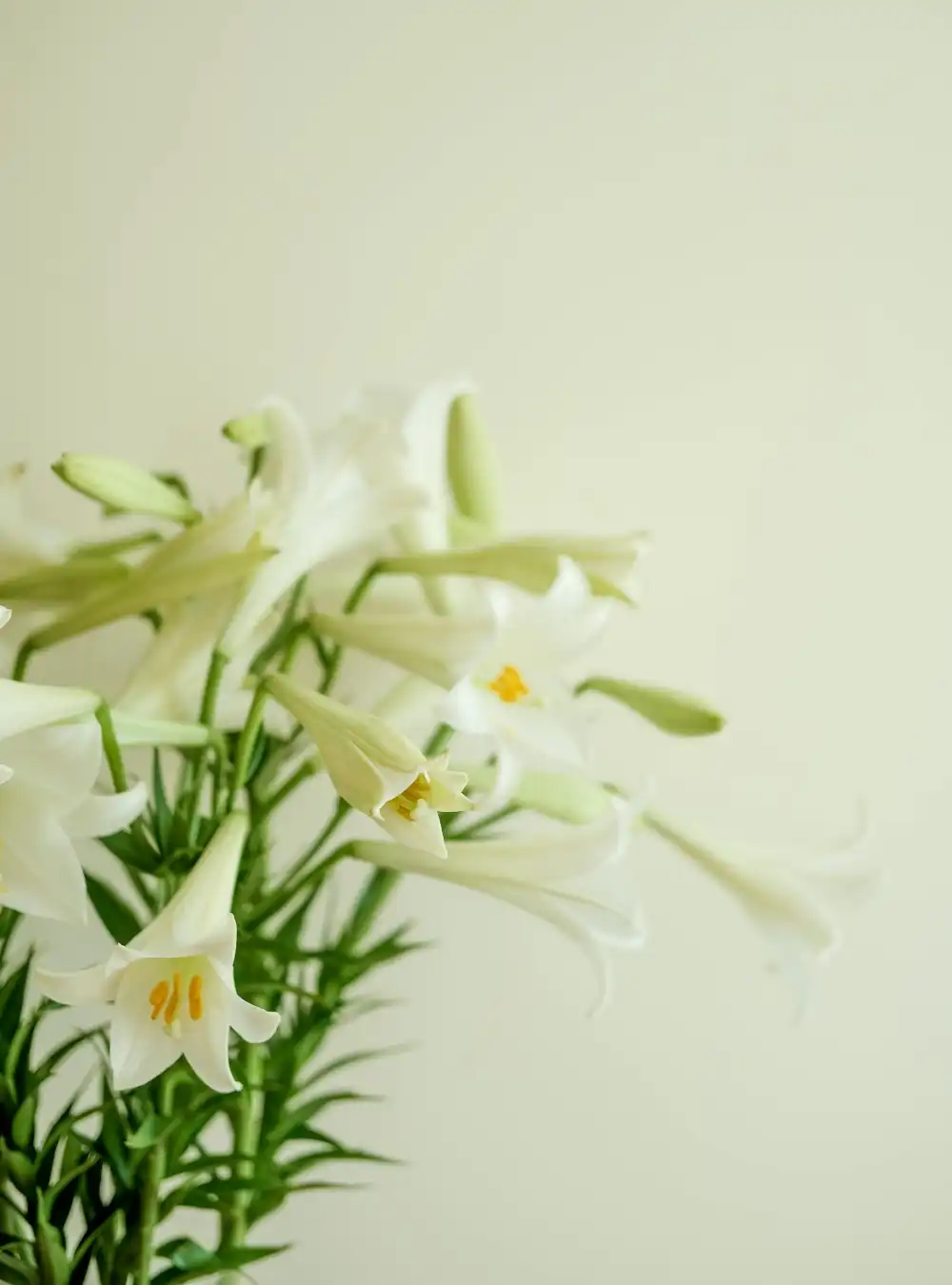تتمتع النباتات المنزلية بطريقة مذهلة في جعل أي منزل يشعر بمزيد من الحيوية والانتعاش. تعمل معظم النباتات المنزلية على تحسين الجو وتحسين جودة الهواء وتوفير شعور بالهدوء، ولكن ليست كل النباتات مناسبة للديكور الداخلي لمنزلك. في الواقع، قد يشكل بعضها مخاطر خفية على الأطفال أو الحيوانات الأليفة. يمكن أن تؤدي بعض النباتات أيضًا إلى إثارة الحساسية أو تتطلب ظروف معيشية يصعب على أي شخص سوى صاحب النباتات الأكثر خبرة الحفاظ عليها.
قبل اختيار نبات ما، من الضروري فهم عيوبه للتأكد من ملاءمته لأسلوب حياتك وبيئتك. إن اختيار نبات أكثر تفكيرًا سيسمح لك بإنشاء حديقة خالية من القلق والمتاعب.

ضع دائمًا ظروفك الخاصة في الاعتبار عند اختيار النباتات المنزلية المناسبة لمساحة معيشتك. لا تتشابه بيئة المنزل وأسلوب الحياة وشركاء الأسرة لدى الجميع، لذا فمن المنطقي أن تختلف اختياراتك للنباتات المنزلية عن تلك التي يختارها جارك. على سبيل المثال، قد يكون النبات المنزلي السام للحيوانات الأليفة مناسبًا تمامًا للأشخاص الذين لا يمتلكون حيوانات أليفة. يجب أن تتبع حكمك الخاص في اختيار النباتات المنزلية.
الدفلى

الدفلى شجيرة دائمة الخضرة ذات أزهار بيضاء أو وردية أو حمراء. تحظى بشعبية كبيرة كنبات خارجي بسبب مقاومتها للجفاف، ولكنها تتكيف أيضًا مع النمو الداخلي.
تحتوي جميع أجزاء هذا النبات، بما في ذلك الأوراق والأزهار والساق والنسغ، على مركبات سامة، أحدها يسمى الأولياندرين. يمكن أن يسبب هذا عواقب وخيمة إذا تم تناوله حتى بكميات صغيرة. تشمل أعراض تناول النبات الغثيان والقيء وآلام البطن وعدم انتظام ضربات القلب، وفي الحالات الشديدة، السكتة القلبية. حتى التعامل مع النبات يمكن أن يسبب تهيج الجلد والطفح الجلدي لدى الأشخاص ذوي البشرة الحساسة. يجب تجنب هذا النبات المنزلي في المنازل التي بها حيوانات أليفة و/أو أطفال، ويجب على أي شخص التعامل معه بحذر.
كالاديوم

الكالاديوم نبات استوائي له أوراق متنوعة على شكل قلب بألوان تشمل الأخضر والوردي والأحمر. وعلى الرغم من أن هذا النبات محبوب لجماله الرشيق، فإن جميع أجزاء هذا النبات تحتوي على بلورات أكسالات الكالسيوم، والتي يمكن أن تسبب تهيجًا كبيرًا إذا تم تناولها. قد يسبب تناول هذا النبات إحساسًا بالحرقان في الفم والحلق والجهاز الهضمي. ومن الآثار الجانبية المحتملة الأخرى سيلان اللعاب والغثيان والقيء وصعوبة البلع. كما يمكن أن تشكل الأوراق الكبيرة خطر الاختناق إذا تم ابتلاعها.
من الأفضل إبعاد هذه النباتات عن الحيوانات الأليفة والأطفال الصغار الذين قد ينجذبون إلى أوراقها الملونة.
نخيل الساغو

نخيل الساغو هو نبات منزلي شائع بسبب مظهره الزخرفي الذي يشبه النخيل. ومع ذلك، فإن هذا النبات المنزلي سام للغاية للحيوانات والبشر. تحتوي جميع أجزاء هذا النبات، وخاصة البذور، على السيكاسين. يمكن أن يؤدي تناول هذا السم، حتى بكميات صغيرة، إلى القيء والإسهال والخمول وفشل الكبد.
بالنسبة للحيوانات الأليفة، وخاصة الكلاب، فإن عواقب تناول هذا النبات غالبًا ما تكون مميتة في حالة عدم العلاج الفوري. تشمل العلامات التي تشير إلى تسمم الحيوان الأليف بهذا النبات العطش الشديد والكدمات والإشارات العصبية، مثل الرعشة أو النوبات. ونظرًا للسمية العالية لهذا النبات، فمن الأفضل إبعاده عن المنازل التي بها أطفال صغار وحيوانات أليفة.
زنابق عيد الفصح/زنابق النهار

الزنابق، مثل زنابق عيد الفصح أو زنابق النهار، تحظى بشعبية كبيرة خلال فصل الربيع بسبب أزهارها الجذابة والعطرة ورمزيتها للولادة والتجديد. لسوء الحظ، هذه النباتات سامة للغاية للقطط، حيث تشكل جميع أجزاء النبات خطرًا صحيًا خطيرًا. يمكن أن يؤدي تناول الزنبق، حتى بكميات صغيرة، إلى فشل الكبد في القطط. تشمل الأعراض المبكرة للتسمم سيلان اللعاب والقيء والخمول، والتي يمكن أن تتطور إلى آثار أكثر خطورة، مثل الجفاف وفقدان الاتجاه. يمكن أن يؤدي هذا إلى عواقب وخيمة إذا تُرك دون علاج.
هذا النبات ليس سامًا للكلاب أو البشر، ولكن من الأفضل إبعاده عن المنازل التي تحتوي على قطط كحيوانات أليفة.
زهرة السلام

Peace lilies are a popular houseplant because of their easy maintenance, glossy green leaves, and attractive white blooms. Despite their widespread use, these plants can pose a risk to humans and pets because of the calcium oxalate crystals in the leaves and flowers.
If peace lilies leaves or flowers are ingested, they can cause swelling of the mouth and throat, drooling, and difficulty swallowing. Even though this is rarely life-threatening, it can be distressing, especially for small pets, and require a costly vet visit. Because of its negative side effects, this plant works best in homes with older children and no pets.
الصبار

Aloe vera is a popular houseplant for its fleshy leaves that contain a gel that is thought to be soothing for skin irritations. While the gel has medicinal benefits for humans, aloe vera plants can cause irritation to pets if they eat it.
Aloe vera plants have a compound called anthraquinones, which can have a laxative effect and cause vomiting, diarrhea, lethargy, and abdominal pain in pets. Humans should also avoid consuming aloe vera because consuming aloe latex can result in some of the same side effects, such as abdominal irritation and kidney problems with prolonged use. Topical use of aloe may also cause skin irritation in certain people. Because of the potential negative side effects, it is best to keep this plant out of reach of animals.
Pothos

Pothos, also known as devil’s ivy, is a popular houseplant due to its ease of growth and graceful trailing leaves. Pothos leaves, like other houseplants, contain calcium oxalate crystals, which can be harmful to the health of small children and pets, but are especially harmful to cats and dogs. Consuming this plant, in particular, can cause irritation and swelling in the mouth and throat. If your pet eats this plant, you may notice them drooling, vomiting, or having difficulty swallowing.
This plant’s prolific growth and trailing habit make it difficult to keep away from children and pets, but you should do your best to keep it out of reach.
Weeping Fig

Weeping figs are popular indoor trees thanks to their graceful, arching growth pattern and lush green foliage. These trees produce latex sap, which can cause allergic reactions, such as skin rashes and dermatitis. This is especially true for those who are allergic to latex.
Weeping figs can also cause problems if the leaves are eaten, like nausea and vomiting, especially for pets. While they are not considered toxic, you may need to practice caution if your pet shows a proclivity to eat leaves. If you suspect your pet has eaten weeping fig foliage, look for symptoms such as drooling or digestive distress.
Euphorbia

Euphorbia is a large genus of plants that includes the popular poinsettia. Euphorbias are well-known for their distinctive shapes and colorful bracts, but they produce a milky latex sap that can be harmful to human and animal health. This sap contains compounds that can cause skin irritations such as rashes, itching, and redness.
When animals or humans consume these plants, it can lead to more serious health complications such as nausea, vomiting, and diarrhea. Euphorbia, in particular, can cause gastrointestinal distress in cats and dogs.
Cacti

Cacti have a unique and recognizable shape and vibrant flowers that make them a popular addition to some indoor gardens. Certain plants have sharp thorns and spikes that can make them not ideal in households with curious children or pets. Accidental contact with cacti can result in puncture wounds and scratches that, if left untreated, can lead to infection. Some, like the barrel cactus, also have sap, which can cause irritation to the skin.
While not toxic, ingesting certain cacti can cause nausea and vomiting, as well as the risk and discomfort associated with eating sharp spikes. To reduce these risks, keep cacti out of reach and wear gloves when handling them.
Dumb Cane

Dumb cane is a celebrated houseplant because of its lush foliage and interestingly variegated leaves. This plant also contain calcium oxalate in all parts of the plant, so it can pose significant health risks. Even in small doses, this plant can cause severe oral irritation, including burning in the mouth and throat, swelling, and difficulty swallowing. Someone who is drooling, vomiting, or in respiratory distress may have consumed some dumb cane leaves.
When eaten in large quantities, dumb cane can be fatal to both humans and pets. People with sensitive skin may experience skin irritation as a result of handling the plants. When handling this plant, wear gloves and keep it away from the ground to protect small children and pets.
If you like our page please share with your friends & Facebook